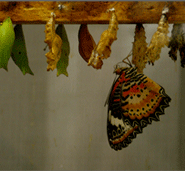This poem, by Tracy Smith, is a poem that I have found myself returning to. Not only does it play with scale--miniaturizing the giant and magnifying the tiny--but it pulls taut with it a fundamental tension that braces our existence. The tension between the cosmic and the earthly. When we spin around ourselves in a field, and the stars seem to be spinning too, why do our arms begin to pull away from our sides? Our local frame is inextricably linked to the rest of the universe.
Here is the poem, which so eerily tells the tale of the big, otherworldly science of the cosmos and the trifles of earthly art.
The Universe Is a House Party
The universe is expanding. Look: postcards
And panties, bottles with lipstick on the rim,
Orphan socks and napkins dried into knots.
Quickly, wordlessly, all of it whisked into file
With radio waves from a generation ago,
Drifting to the edge of what doesn’t end,
Like the air inside a balloon. Is it bright?
Will our eyes crimp shut? Is it molten, atomic,
A conflagration of suns? It sounds like the kind of party
Your neighbors forget to invite you to: bass throbbing
Through walls, and everyone thudding around drunk
On the roof. We grind lenses to an impossible strength,
Point them toward the future, and dream of beings
We’ll welcome with indefatigable hospitality:
How marvelous you’ve come! We won’t flinch
At the pinprick mouths, the nubbin limbs. We’ll rise,
Gracile, robust. Mi casa es su casa. Never more sincere.
Seeing us, they’ll know exactly what we mean.
Of course, it’s ours. If it’s anyone’s, it’s ours.
Doesn't it make you gasp a little inside yourself?
It is this same tension between seeming dualities or parallels and the realization that they are not opposing, instead, they are the same line on different planes, that inspires this issue.
Light & Dark necessarily require the other to exist. The issue navigates the cosmic with a study in black holes, their science, their psychology and the art with which they are visualized. It is conjugated with a study of time and earthly disintegration via the moon cycle. Then come the raw, concrete stories about growing up, in Delhi and in Calcutta, with the on and off of light, both within and without.
Sahill Poddar, a physicist in Germany, explains the mysteries of black holes. Surrender your fear of science and go with it: it rewards. Next, we explore Jitish Kallat's series, Epilogue, of 753 photographs that depict the moon as rotis, in varying stages of prepared and eaten, charting his father's life. This piece thus, explorers the relation between the cosmic and the earthly most obviously. It uses light--in photography--and darkness--in the night sky--and also extends it to the light of life and the darkness of death. Prakriti Mukerjee looks at Samira Gupta's photographic novel, Fifty Seven by Eight, which tells us about her--our--life in India, and captures personal yet universal moments of something shared, moments that often go unrecorded because they are often unnoticed. And finally, Astha Kapoor tells the story of the advent of the inverter and how it stole away nights of impostered play. But ironically, when there was light, a dark gloom hung over the room.
The stories use perspective to show that what appears as parallel is really just the same line on different planes.
This issue is a unique one. I hope it illuminates.
Himali.
Editor's Note.
Every sunbeam, every strain of music, every sapling and starfish is ultimately the regeneration of a previous something, a collection of somethings, taking on new shape. At the most indivisible level we can comprehend, all life is nothing more than atoms and molecules dancing their way through various forms. And if everything comes from something, it stands to reason that everything must go to something as well.
Read More
Illusion: Seeing Beyond Seeing
Meaning: In Search of Significance.
Melody: A Different Tune
Rhythm: Ordering Time


